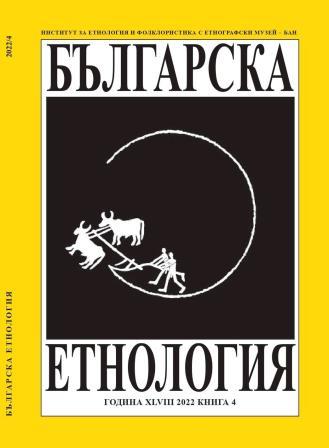Българите в Бесарабия през 40-те години на XX век – екзогенни фактори на демографския процес. Раждаемост и смъртност
The Bulgarians in Bessarabia in the 1940s – Exogenous Factors of the Demographic Process. Birthrate and Mortality
Author(s): Alexander I. Ganchev, Alexander A. PrigarinSubject(s): History, Anthropology, Social Sciences, Customs / Folklore, Ethnohistory, Local History / Microhistory, Oral history, Political history, Social history, Modern Age, Recent History (1900 till today), Cultural Anthropology / Ethnology, Culture and social structure
Published by: Институт за етнология и фолклористика с Етнографски музей при БАН
Keywords: Bulgarians; Bessarabia; historical demography; birthrate; mortality; population reproductionduction
Summary/Abstract: The following article highlights the most important endogenous aspects of population reproduction in crisis circumstances, based on demographic data on the Bessarabian Bulgarians in the 1940s. During this decade, the territory of Bessarabia sporadically fell within the borders of both Romania and the USSR, which led to the collapse of the traditional social institutions and practices among the Bulgarians living there. Led by the numerous political changes, demographic birth and death rates within a group are affected by these exogenous factors, while reflecting actual societal alterations. As a basis for the study, information extracted from the current reports of the village councils was used, or in other words – the so-called population registers. The results of the data processing are presented in a diachronic comparative perspective regarding the history of the Bulgarian communities in Bessarabia. This approach allows for analytic clarifications of the scale and nature of the famine in 1946-1947. The average daily mortality rate was found to be 18.3. In general, the specificity of the demographic transition of the Bulgarian group from a traditional to a modern model of reproduction stands out. The role of exogenous causes in the final phase of this transition has been also revealed. Birth rates were reported to be gradually decreasing while mortality rates were increasing. The consequences of this transformation were visible in the next generation in the 1960s.
Journal: Българска етнология
- Issue Year: 2022
- Issue No: 4
- Page Range: 415-433
- Page Count: 19
- Language: Bulgarian

